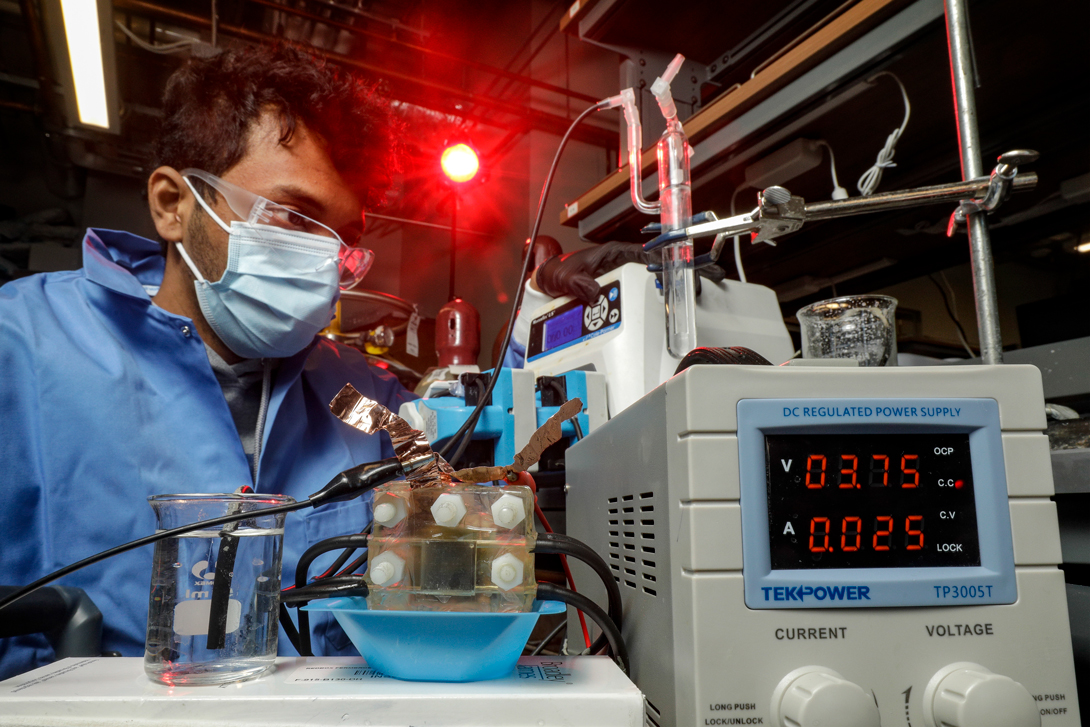A new leaf

The scientists who created a device that mimics the photosynthesis-producing properties of a leaf have improved its performance, increasing its promise to reduce carbon dioxide in the atmosphere.
Meenesh Singh, an assistant professor of chemical engineering, and his team have designed an artificial leaf that can perform 100 times better than current carbon-capturing systems. Its effectiveness is made possible by its ability to function in the real world — as opposed to working only in labs with carbon dioxide from pressurized tanks.
“Our system has the potential to play a significant role in reducing greenhouse gases thanks to its high rate of carbon capture, relatively low cost and moderate energy, even when compared to the best lab-based systems,” Singh said.
The leaf utilizes a water gradient to absorb carbon dioxide from air or flue gas and produce bicarbonate ions. The ions are then moved to a liquid solution using an electric field, which concentrates the ions back into carbon dioxide. The system, which is small enough to fit inside a backpack, takes less energy than the amount needed for a 1-watt LED lightbulb.
One of its key features is its “stacking” ability, meaning that the modules can be added or subtracted, making the leaf highly customizable for fitting the needs and affordability of a home, classroom, or industrial organization.
“It’s particularly exciting that this real-world application of an electrodialysis-driven artificial leaf had a high flux with a small, modular surface area,” Singh said. “A small module the size of a home humidifier can remove greater than 1 kilogram of CO2 per day, and four industrial electrodialysis stacks can capture greater than 300 kilograms of CO2 per hour from flue gas.”